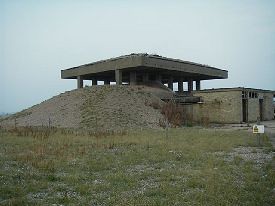Being members of the lowest lying Mountaineering Club in Britain most of us, in search
of crags or peaks, journey in the direction of “away” most weekends. East Anglia is
largely bereft of any vertical scenery and can be seen as less than dramatic; the lack of
contours also contributes little in the way of physical challenges or testing weather
conditions. Nevertheless Suffolk holds charms of its own if you search them out.
I recently spent a weekend leading a National Trust Working Holiday based on Orford
Ness. The Ness is the largest vegetated shingle spit in Europe and is an extremely
important habitat, boasting several rare plant, bird and insect species. By contrast to
the more usual recreational haunts of club members, the Ness is the very antithesis of
‘mountainous’; the highest point barely above sea level and as flat as yesterday’s lager
it is nonetheless a beautiful and engaging place.
The spit did not exist 800 years ago, being deposited over that time by the constant
erosion and subsequent deposition of the headland to the North. Orford was once a large
and thriving port town, as evidenced by its relatively large castle complex, but as the
shingle encroached and narrowed the passage to the North Sea, so the town’s fortunes
declined.
In order to reach the Ness you take a short boat ride across from Orford Quay. This
highlights the feeling of remoteness that pervades the place and this is further augmented
as you start to unearth the history of the place.
 |
Orford Ness has a long and intriguing military history. First used as a base for a defence against Napoleonic invasion, it was also used as a WWI airstrip where early aerial photography was developed. During the Second World War a top secret radar system was built and tested on the island and, finally, during the Cold War, atomic weapons systems were tested in weirdly shaped buildings part buried in the shingle.
The only person permanently based on the Ness is the National Trust Warden. There are very few roads and even fewer vehicles. The wind from the North Sea moans softly across the open expanses of shingle and you can quickly feel deliciously isolated and alone.
Not surprisingly the Ness has more than its fair share of ghost stories and a plethora of myths relating to its involvement in various top secret projects. Although the area is now owned and managed by the National Trust the MoD is still very tight lipped about what went on there right up until 1986, and every winter a storm unearths at least one chunk of ordnance from under the shingle.
There are a number of walks around the Ness taking in the lighthouse, the military buildings, dunes, lagoons, shingle banks and big skies. There isn’t so much as a hillock in sight but the place has an atmosphere all its own, lots of interesting flora and fauna and an awesome back-story. The castle on the mainland isn’t a bad visit either and there is a pub near the quay that does a decent line in grub. One weekend, when you don’t fancy the drive to steeper parts, check it out, it is a unique and slightly spooky place.
NB Check access details on the NT website first. www.nationaltrust.org.uk
 |
